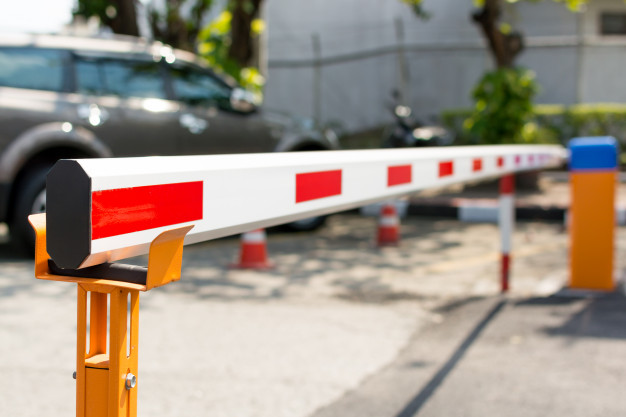How To Choose And Understand Crash Gate Rating Systems
The way that U.S. government and army bases in our country and in addition abroad were such glaring focuses for a fear monger assault, especially as a vehicle that smashes a security gate, prompted the improvement of a crash barrier rating framework. The motivation behind the framework was to create and uphold testing guidelines to check and ensure that the “ceasing power” of crash gates accomplished certain base necessities.
In April, 1985 the U.S. Division of State divulged (DOS) SD-STD-02.01, which was refreshed with the Vehicle Crash Testing of Perimeter Parking barriers and Gates, Revision An of every 2003. This standard uses what is alluded to as a “K” rating to quantify the halting energy of a barrier in connection to the speed and weight of a vehicle that collides with it. The standard K rating weight for a vehicle was built up at 15,000 lbs. Keeping in mind the end goal to meet the standard and accomplish accreditation, the barrier must not allow the infiltration of the vehicle’s freight bed to surpass a separation of in excess of 3.3 feet (1 meter) past the pre-affect inside edge of the barrier.

There are three separate K rating arrangements in light of the speed of the vehicle upon affect:
- K4 – 30 mph
- K8 – 40 mph
- K12 – 50 mph
As said, the first DoS standard was refreshed in 2003 for use by the Department of Defense, the Department of Energy and different offices of the central government. The redesign was regarded essential because of the way that numerous State Department establishments built up in remote nations included structures in closeness with the road as well as different structures, requiring more stringent safety efforts. The old standard included “separation of entrance” levels L3 (3 ft. or then again less), L2 (3 ft. to 20 ft.) and L1 (20 ft. to 50 ft.). The new standard dispensed with levels L1 and L2, and built up a reasonable infiltration of close to 1 meter (3.3 ft.).
The State Department never again guarantees crash tests, nonetheless, The American Society for Testing and Materials (ASTM) appraisals are currently the standard for crash test evaluations and are utilized to gauge both speed and infiltration. Under ASTM International Designation F 2656-07, the speed appraisals are separated in view of the sort of vehicle, for example, a traveler vehicle, pickup truck, light-obligation vehicle, and so forth.:
The Most Effective Method To Choose A Crash Barrier
Picking the most proper crash barrier for your office can be a troublesome procedure. Cautious thought of various components is important to touch base at the best choice for your association:
Lead a far reaching hazard evaluation
Before investigating the different crash barrier choices, you should set aside the opportunity to survey the defenselessness of your office to a vehicle assault. Start by leading an exhaustive examination to decide high-weakness territories. You ought to likewise direct movement examinations around your office. These ought to incorporate activity and movement concentrates to survey factors, for example, the in all probability sorts of assault vehicles and potential ways vehicles may adopt upon strategy. Furthermore, clear up your association’s necessities as far as securing access focuses for approved vehicles. At last, decide the level or levels of crash security required (case: M30, M40 and M50).
Select the most suitable physical border barrier
When you have finished the hazard evaluation, you ought to have a superior comprehension of the kind of crash barrier that will work best at your office. Now it is imperative to assess a few variables, including:
- The base standoff remove (the separation at which unscreened vehicles and people on foot are allowed to approach the office) versus the permissible property lines
- Most extreme reasonable vehicle size and speed in connection to current activity stream
- Current site conditions versus your necessities as far as crash barrier establishment
- Security insurance level versus approved work force and vehicle availability
- Tasteful interest of the barrier, which is a particularly essential thought in urban conditions
Perpetual versus removable
While choosing a crash barrier, consider if the barrier should be perpetual or removable. In the event that removable, bollards are normally the most useful crash barrier elective. Safetyflex offers an innovation where a similar shallow mount bollard framework is equipped for working as removable or settled, contingent upon the establishment method. Because of the bigger footings and general structure related with gate frameworks and bars they don’t have the capability of being versatile.
Size of opening
The extent of the opening and accessible space to each side of it will help decide the kind of crash barrier you pick. Accepting the requirement for a computerized gate framework and adequate general space is accessible, a cantilever slide gate is commonly the best alternative. In the event that there isn’t adequate space consider an overhead slide or vertical lift gate. In a few circumstances a slide gate having a ground track may likewise be an option because of its shorter tail length. For security reasons, when in doubt, the barrier opening ought to be no bigger than required.
What crash rating is required for your office? Your hazard evaluation ought to have given you a solid sign of the sorts of vehicles that represent the greatest danger to your office. This will enable you to decide the best crash barrier for your necessities. Utilize the test evaluations to coordinate the barrier to variables, for example, vehicle compose, speed and level of entrance upon affect. Trustworthy crash barrier makes offer items that unmistakably show which (assuming any) of the DoS/ASTM testing models that may apply. When in doubt, the higher the rating, the more costly the item will be, as it requires extra materials to guarantee consistency with the higher standard.














